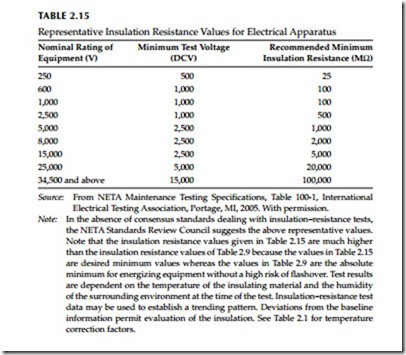Precautions When Making DC Tests
• DC overpotential test can be conducted any time an equipment is taken out of service for a few hours; however, it is preferred that the test be planned in conjunction with a periodic dismantled inspection of the equipment. This will allow time to investigate the cause of unsatisfactory test results and make necessary repairs with a mini- mum of interference to normal production.
• Equipment should be taken off the line sufficiently in advance of the test to permit it to cool below 40°C (104°F). Testing at ambient tem- perature is preferred.
• Insulation of windings should be relatively clean and dry. If exces- sive foreign matter is present, the windings should be cleaned prior to conducting the test. Any cleaning solvent used should be allowed to evaporate thoroughly so that the surface of the insulation is dry; otherwise, false leakage current readings may result.
• Where it is possible to do so, especially with large rotating machines, phase connections should be opened in order to test each phase separately, phase to phase and phase to ground. All windings not under test should be short-circuited and grounded to the machine frame.
• As a safety precaution, before any DC voltage tests are conducted, a ground should be applied to the unit or cable to be tested.
• Allow the DC voltage to discharge sufficiently, especially in cables after tests have been concluded. A common rule of thumb is that the discharge time should be four times the charge time.
• All components require de-energizing and solid grounding before being tested. Check with a reliable voltage indicator that responds to alternating current (AC) and DC voltage before testing to ensure all equipment is deenergized.
• All cable termination ends as well as all connecting leads of components being tested should be guarded from accidental contact by barriers, enclosures, or a watchman at all points. The cable ends should be sepa- rated from all elements not being tested by distances at least 0.1 in/kV of test potential for voltages upto 100 kV and at least 0.2 in/kV for higher test voltages.
• Breakdown may generate traveling waves into the cable that can be high enough to cause degradation or breakdown of the insulation being tested. Installation of suitable rod gaps should be considered according to IEEE Std 4 for DC voltages to provide protection. A damping resistor may be installed to reduce oscillations and reflection voltages into the insulation being tested.
